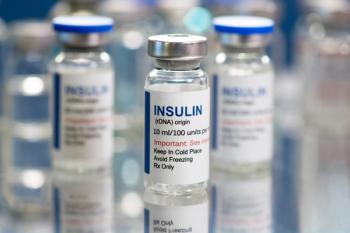
Examining Role of BMI in Type 1 Diabetes Development
Because of misclassification of diabetes type and the absence of distinction between risk factors, such as birth weight, and diabetes type, uncertainty exists regarding the relationship between obesity and T1D.
The role of obesity in the development of type 1 diabetes (T1D) is uncertain. According to a systematic review and meta-analysis recently published in Cardiovascular Diabetology, an association between high body mass index (BMI) and the risk of TID was overserved, in a graded manner.1
Peak incidence of T1D occurs in the age range of 10 to 14 years, while 25% of individuals with T1D develop it during adulthood. Because of misclassification of diabetes type and the absence of distinction between risk factors, such as birth weight, and diabetes type, uncertainty exists regarding the relationship between obesity and T1D.
Study authors conducted a systematic review of 10 cohort studies to synthesize evidence for the T1D incidence-obesity relationship. The investigators searched published literature using the Ovid MEDLINE and EMBASE databases. “Type 1,” “early onset,” “juvenile,” and “insulin dependent” were used to identify T1D.
The cohort studies were included in the systematic review if: exposure was obesity, overweight, or both, measured by BMI at a given time-point, the studies featured BMI data after 2 years of age, and studies followed patients for the development of T1D.
After searches, exclusions, and review, 10 cohort studies met inclusion criteria. Of these, 7 studies evaluated BMI as a categorical variable while the remaining 3 used continuous BMI data. In the 7 studies with categorical BMI data, the mean or median age at study ranged between 2 years and 59 years.
Among these studies, 4 cohort studies featured just children and adolescents aged younger than 20 years, while the other 3 included adults (aged 20 years or older) only. Overall, data provide information on 1,690,660 individuals and 1979 cases of incident T1D (0.12%).
The risk ratio (RR) for T1D among individuals with obesity or overweight and obesity was 1.87 (1.52-2.29), compared to individuals without overweight or obesity. Among those with overweight or obesity, all studies reported a trend of higher risk for T1D.
Five studies separated overweight and obesity categories. In these cohorts, the pooled RR for incident T1D in individuals with obesity was 2.17 (95% CI, 1.75-2.69 [I2 = 0%]). Three studies that featured people with overweight had a pooled RR of 1.35 (95% CI, 0.93-1.97).
Overall, study authors concluded that high BMI was associated with an increased risk of incident T1D and that, “these results provide real world evidence for the deleterious contribution of obesity to the development of type 1 diabetes.”
Reference
1. Nitecki M, Gerstein HC, Balmakov Y, et al. High BMI and the risk for incident type 1 Diabetes Mellitus: a systematic review and meta-analysis of aggregated cohort studies. Cardiovasc Diabetol. 2023;22(1):300. Published 2023 Nov 2. doi:10.1186/s12933-023-02007-y
Newsletter
Pharmacy practice is always changing. Stay ahead of the curve with the Drug Topics newsletter and get the latest drug information, industry trends, and patient care tips.




































































































































